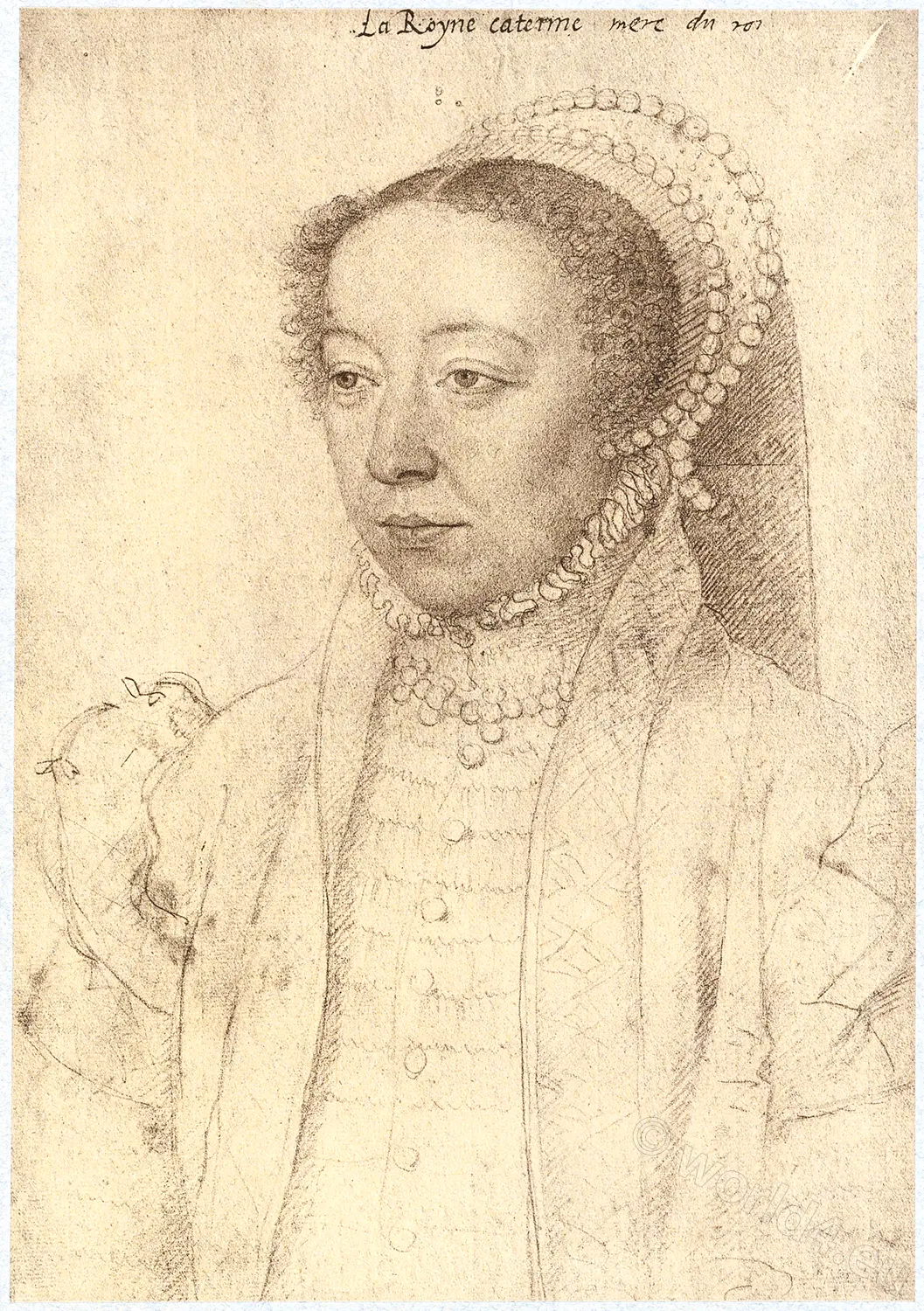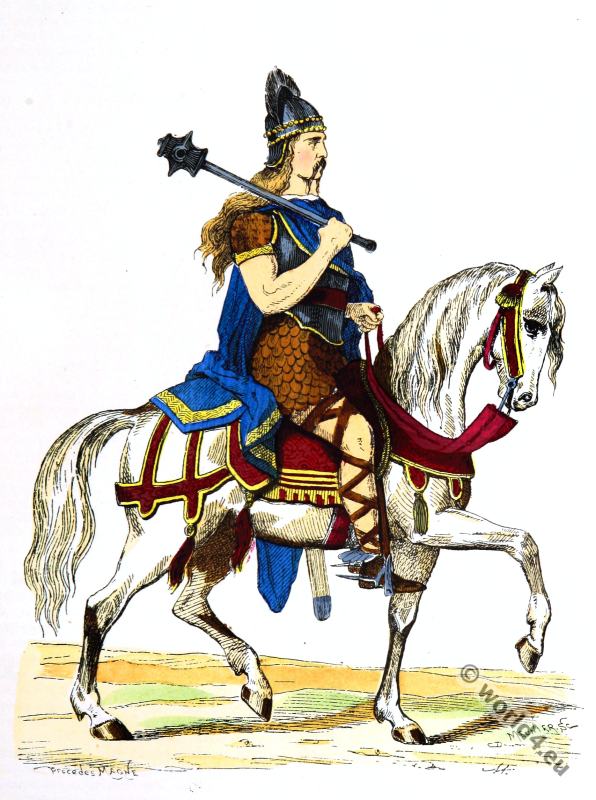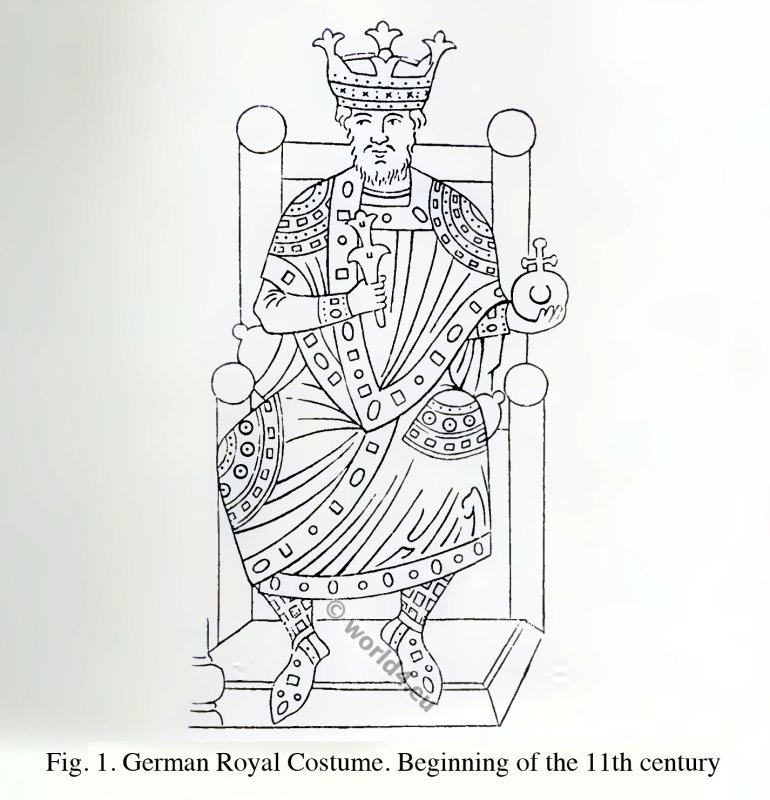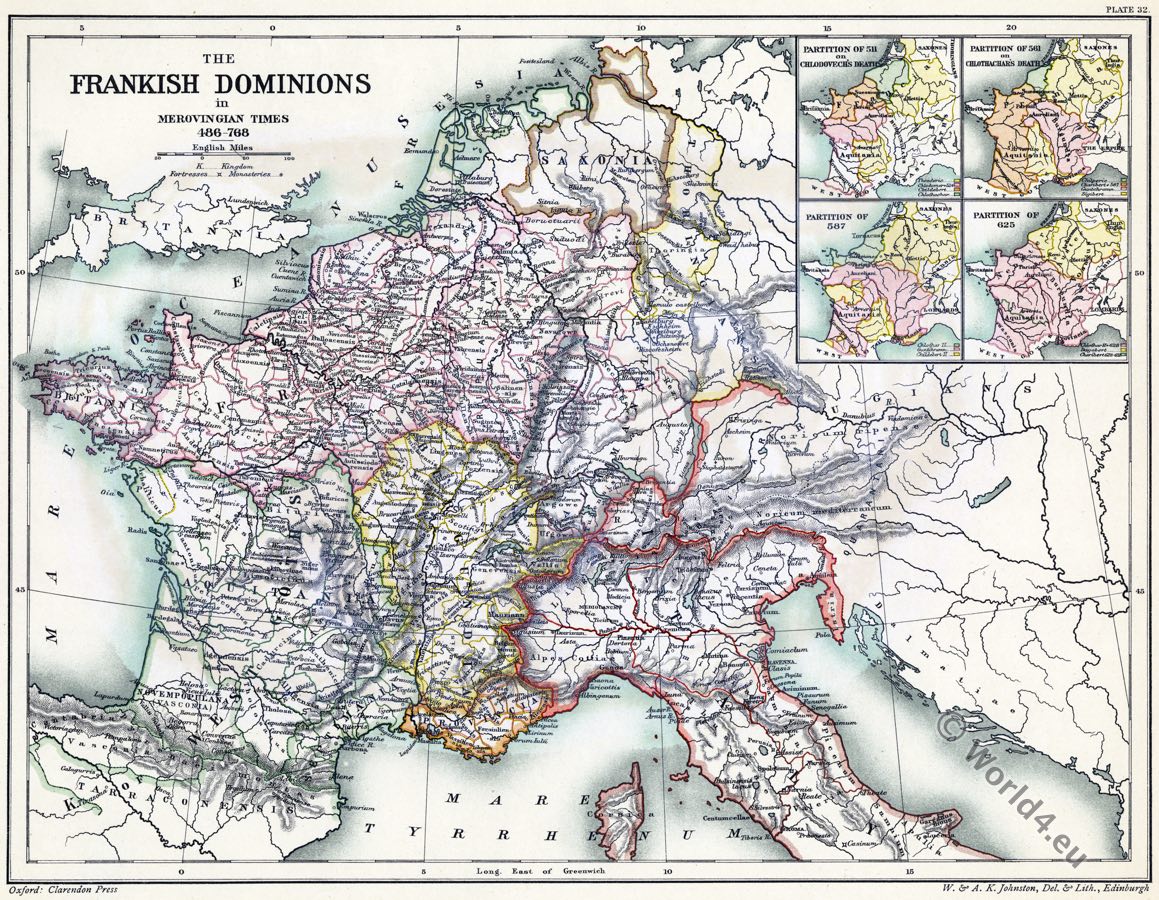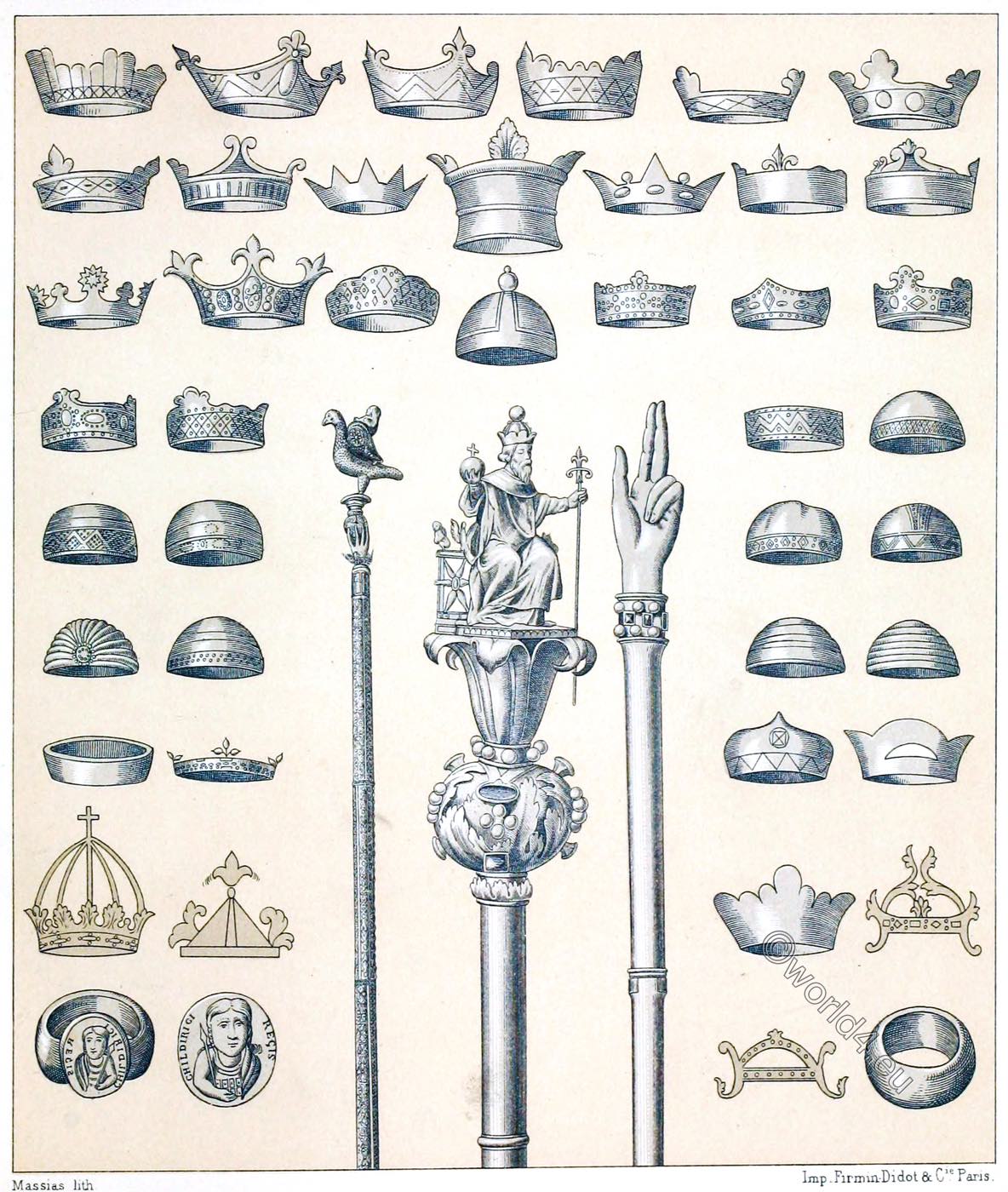
EUROPE – MIDDLE AGES FRANCE. ROYAL CROWNS AND SCEPTRE.

Crowns and scepters of the Merovingian and Carolingian Frankish kings in the Middle Ages.
Most of the examples presented here are borrowed from monuments that belong to a later time than the persons depicted. Bernard de Montfaucon, from whose work, Les Monumens De La Monarchie Françoise, these samples have been taken, believes that the statues of French kings from older buildings have been transferred to those of the XI, XII and XIII centuries, but this view requires proof in each case, which has not been provided.
Therefore, it would be a good idea to leave all these crowns and scepters to the XI, XII and XIII century, the period of the Romanesque style, for which most of the ornaments are also characteristic. The only exception is the signet ring of King Childerich I, which was found in his tomb in Tournai, Belgium.
Nos. 1, 2, 3, 4, 5, 6, 7 Crowns of Clovis, his four sons Theuderich, Chlodomer, Childebert and Chlothar and the two queens Clotilde and Ultrogotho (wife of Childebert). From the portal of the Paris Abbey of St. Vincent, later St. Germain-des-Prés in Paris.
Nos. 8, 9, 10, 11. crowns of statues from the third portal of Notre Dame in Paris.
Nos. 12, 13. From the portal of Chartres cathedral.
No. 14: From the tomb of Clothar I in the underground church of Saint-Médard (“in basilicam”) in Soissons.
No. 15. The supposedly real crown of Fredegund. Fredegund or Fredegunda (died in 597) was the wife and queen of Chilperich I, the Merovingian-Franconian king of Soissons. She served as regent during the minority of her son Clothar II from 584 to 597.
Nos. 16, 17. Supposedly from Dagobert’s time. Dagobert I (ca. 603 – 19 January 639 A.D.) was King of Austrasia (623-634), King of all Franks (629-634) and King of Neustria and Burgundy (629-639). He was the last king of the Merovingian dynasty to exercise real royal power and the first of the Frankish kings to be buried in the royal tombs of St. Denis Basilica.
Nos. 18, 19, 20, 21, 22, 23, 24, 25, 26, 27, 28, 29, 30, 31, 32. crowns and caps, made by Abbot Fulrad in the time of Pippin and Charlemagne.
Fulrad was born into a wealthy family in 710 and died on 16 July 784 as the Benedictine Abbot of St Denis. He was the advisor of both Pippin and Charlemagne. Historians consider Fulrad to be particularly significant because of its importance in the rise of the Frankish kingdom and the insights it provided into early Carolingian society.
Nos. 33, 34, 35, 36. Crowns of Charlemagne. The latter three come from a seal of a mosaic of the Lateran Basilica (Italian Basilica San Giovanni in Laterano) and from a statue in Aachen.
Nos. 37, 38, 39, 40, 41 Crowns of Pippin the Short, Lothar and Charles the Bald from a manuscript of the IXth century.
Nos. 42, 43, 44. Childerich’s signet ring, found in his grave in Tournai.
No. 45. Scepter Dagoberts from the treasure of the abbey church of St Denis. The eagle with the fragment of a human figure is of Roman origin and is said to come from a consul’s staff. The staff shows Byzantine ornaments.
No. 46, 47. Scepter and Main de Justice. They served at the coronation of the French kings. From the treasure of the abbey church of St. Denis.
Source: History of the costume in chronological development by Albert Charles Auguste Racinet. Edited by Adolf Rosenberg. Berlin 1888.


